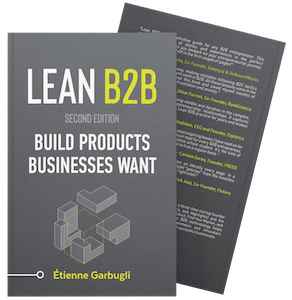“People have this Product/Market Fit survey, “How disappointed would you be if this product no longer existed?” A lot of people try to shoot down the framework. I don’t even argue with it. Yeah, you’re right, but you’re missing the point. The point isn’t the score. The point is all the valuable information you can get when you ask open-ended questions.” – Hiten Shah, Serial Entrepreneur
In its essence, the Product/Market Fit survey–also known as The Sean Ellis Test based on the survey’s creator–is the only true, standardized way to evaluate Product/Market Fit.
The full survey has seven questions:
- How would you feel if you could no longer use [ Product ]?
- Have you recommended [ Product ] to anyone?
- How did you discover [ Product ]?
- What would you likely use as an alternative if [ Product ] were no longer available?
- What is the primary benefit that you have received from [ Product ]?
- What type of person do you think would benefit most from [ Product ]?
- How can we improve [ Product ] to better meet your needs?
The core question on which the Product/Market Fit score is based is ‘How would you feel if you could no longer use [ Product ]?’. The multiple choice options are:
- Very disappointed
- Somewhat disappointed
- Not disappointed
- N/A – I no longer use [ Product ]
In Sean Ellis’ model—based on research surveying hundreds of startups—a product that would leave more than 40% of its users disappointed if it disappeared has Product/Market Fit.
How to Make the Product/Market Fit Survey Work for Your Startup
Although there are questions about how valid the Product/Market Fit score is—because the core question asks respondents to project themselves into the future, and Sean himself has admitted that the 40% threshold is a bit arbitrary—the survey can still point you in the right direction.
You need at least 40 respondents to get valid data. I recommend asking respondents to clarify their answers to the Product/Market Fit score question:
“What is the main reason for your answer?”
By using the first question to segment the rest of the responses, you’ll be able to find ways to improve your product if you haven’t found Product/Market Fit.
Use the Product/Market Fit survey with caution. Make sure you’re using at least one more technique–for example by analyzing retention cohorts–to confirm that you have Product/Market Fit before moving forward.
More on Product/Market Fit
- How to Iterate Product Value to Reach Product/Market Fit In B2B
- Do You Have Product-Market Fit? Here’s How to Tell…
- How a Win/Loss Analysis Can Help You Find Product/Market Fit
Download the First 4 Chapters Free
Learn the major differences between B2B and B2C customer development, how to think about business ideas, and how to assess a venture’s risk in this 70-page sampler.
Working on a B2B Startup?
Learn B2B customer development with our free email course:


